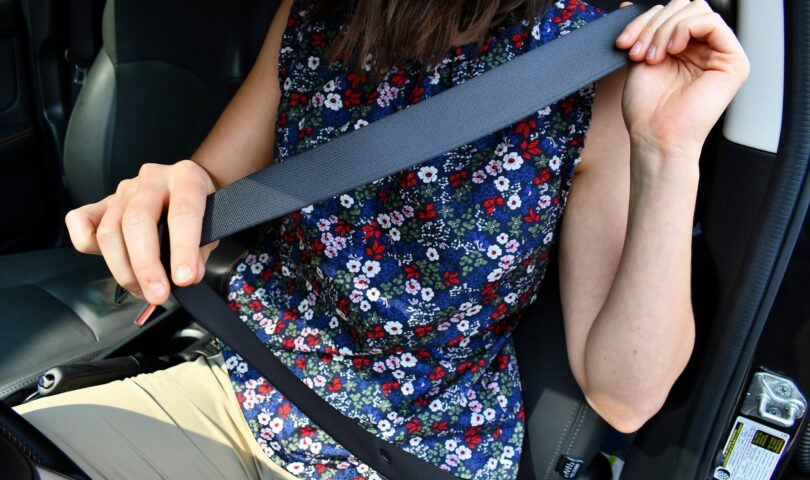Newsroom@DominionPost.com
National Teen Driver Safety Week is Oct. 17-23 — the perfect opportunity to talk with teens about safe driving habits.
This year, the West Virginia Governor’s Highway Safety Program has partnered with the U.S. Department of Transportation’s National Highway Traffic Safety Administration to give parents the tools they need to discuss the importance of driving safety with their young drivers.
Motor vehicle crashes are a leading cause of death for teens (15-18 years old) in the United States. There were 2,042 people killed in crashes involving a teen driver (15-18 years old) in 2019; 628 of the deaths were the teen driver. In 2019, an estimated 92,000 teen passenger vehicle drivers were injured in motor vehicle traffic crashes and an estimated 264,000 people were injured in crashes involving a teen driver, accounting for almost 10% of all those injured that year.
By sharing their driving experience, parents can help teen drivers make smart choices and actions to stay safe on the road. NHTSA gives parents tips on how to talk about safe driving behaviors with their teens along with how to address the most dangerous and deadly driving behaviors for teen drivers: alcohol and other drug use, lack of seat belt use, distracted driving, speeding and driving with passengers.
NHTSA’s website, www.nhtsa.gov/road-safety/teen-driving, has detailed information and statistics on teen driving, and outlines the basic rules parents can use to help reduce the risks for teen drivers:
- Impaired driving — All teens are too young to legally buy, possess, or consume alcohol. However, nationally, 16% of teen drivers involved in fatal crashes in 2019 had alcohol in their system. Alcohol isn’t the only substance that can keep teens from driving safely: marijuana affects a driver’s ability to react to their surroundings. Driving is a complex task and marijuana slows the reaction time. Remind teens that driving under the influence of any impairing substance — including illicit or prescription drugs, or over-the-counter medication — can have deadly consequences. Let teens know this behavior won’t be tolerated.
- Seat belt safety — Wearing a seat belt is one of the simplest ways for teens to stay safe in a vehicle. Yet, too many teens aren’t buckling up. More than half (55%) of the teen drivers who died in crashes in 2019 were unbuckled. Teen drivers and passengers are more likely to die in a crash if they are unbuckled (nine out of 10 of the passengers who died were also unbuckled). Empower teens to stand strong and confirm everyone is buckled up — front and back seat passengers — before the vehicle moves. Reward teens with driving privileges for buckling up every trip, every time, and requiring their passengers to do the same.
- Distracted driving — Cell phone use while driving is more than just risky — it can be deadly. Texting while driving is outlawed in 47 states, Washington, D.C., Puerto Rico, Guam, and the U.S. Virgin Islands. Remind teens about the dangers of using a phone while driving and clarify that any phone use (texting, talking, or using any social media apps) is unacceptable. Even if they are stopped at a light, remind teens that posting on social media while driving is unacceptable and illegal. Distracted driving isn’t limited to cell phone use. Other passengers, audio and climate controls in the vehicle, eating, or drinking while driving are all examples of dangerous distractions for teen drivers. In 2019, among teen drivers involved in fatal crashes, 10% were reported as distracted at the time of the crash. Remind teens that headphones are not appropriate to wear while driving a vehicle. All drivers need to be able to hear another vehicle’s horn or the siren from an emergency vehicle, so they can safely move over and out of the path.
- Speed limits — Speeding is a critical issue for all drivers, especially for teens who are less experienced. In 2019, more than one-quarter (27%) of all teen drivers involved in fatal crashes were speeding at the time of the crash. Males were more likely to be involved in fatal speeding-related crashes than females.
- Passengers — Passengers in a teen’s vehicle can lead to disastrous consequences. Research shows the risk of a fatal crash dramatically increases in direct relation to the number of passengers in a vehicle. The likelihood of teen drivers engaging in risky behavior triples when traveling with multiple passengers.
Teens need to understand the rules and any other restrictions outlined in West Virginia’s graduated driver licensing law and the deadly consequences that could occur. By knowing and enforcing the laws, the teen driver’s safety and that of others on the road is improved.
TWEET @DominionPostWV




